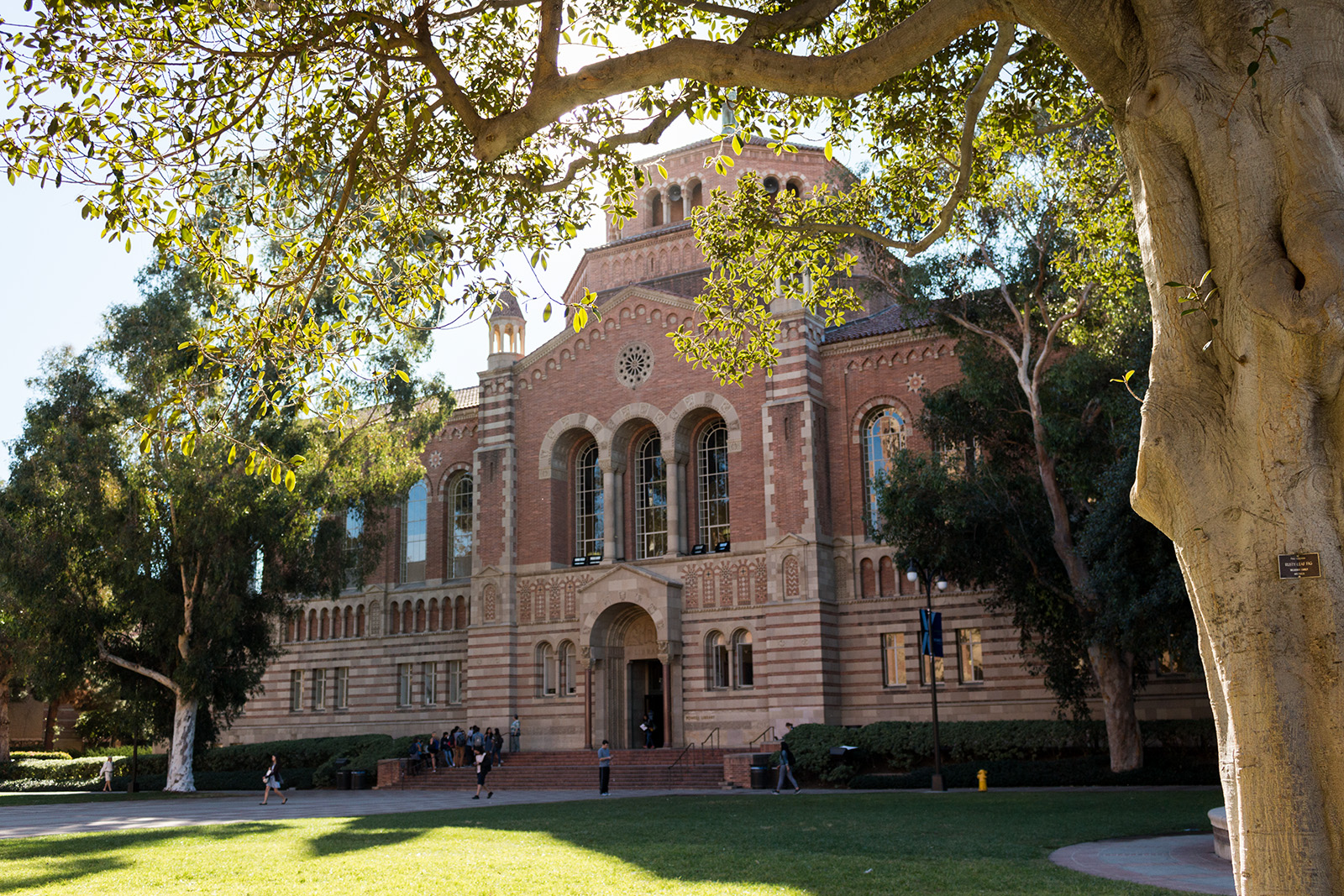This post was updated Sept. 2 at 11:23 p.m.
Several UCLA buildings on and off campus pose serious risk to life in the case of strong earthquakes.
The UCLA Luskin School of Public Affairs, Powell Library and Charles E. Young Research Library are three of 15 buildings that were found to pose serious risk to life according to a seismic assessment initiative released by UCLA on Thursday.
There are three UCLA buildings that would pose a greater risk to life in the case of a strong earthquake, denoted as a severe risk – The Clark Library Gate House, the Kneller House and the UCLA Nimoy Theater – which are located off campus and are unoccupied, said Vice Chancellor and Chief Financial Officer Gregg Goldman in an email statement.
UCLA’s study stems from updates to the UC Seismic Safety Policy made by the University of California in 2017 to assess the seismic risk of buildings on all 10 UC campuses and includes 97 buildings UCLA has reviewed in phase one and two of a three phase review process. Phase three for all UC building assessments is set to be completed no later than June 30, 2020.
UC Berkeley released a statement Wednesday about the completion of phase two of their seismic review process.
Buildings are given ratings from I to VII, based on risk categories and criteria in the California Building Code. These ratings have an approximate relationship to the “Implied risk to life,” which is a subjective measure of potential threats of injury or death, according to the UC Seismic Safety Policy.
Jonathan Stewart, a professor of civil and environmental engineering, reviewed the report and said that a risk category of VI reflects a fairly high but not certain chance that a building might suffer a collapse. He added that a risk category V represents a chance for a partial collapse or nonstructural elementals falling.
Goldman said there is a plan to address seismic risks for UCLA buildings from the first and second phases with a V rating. A V rating corresponds to a serious risk to life threat. He also said UCLA has invested over $2.8 billion since 1990 to make alterations to 69 buildings, with over $700 million coming from state funds.
Goldman said the university will continue to work with the UC Office of the President to gather funds and hopes to receive construction funding to repair its high-priority buildings if California’s spring general obligation bond measure is approved by voters.
Senate Bill 14, a proposed bill in accordance with the state’s general obligation bond law, would allow for the University of California to request funds for seismic retrofitting to reduce seismic risks.
Stewart said that although these are serious concerns, he thinks UCLA leadership has acted responsibly in retrofitting structures so far.
“You see a lot of retrofitted buildings on campus already and there’s a retrofit going on now with Franz Hall,” Stewart said. “So I do have some confidence in the leadership that they do take this seriously, and they are working towards addressing a problem.”
He added that concerned students should be aware of the risks but not overreact. Students should advocate for bond measures to continue retrofitting buildings and focus on preparing themselves for an earthquake, he said.
“I wouldn’t tell students, ‘Don’t come to class,’” Stewart said. “I think that would be an overreaction. It’s something we need to be aware of, and we need to advocate for these kinds of bond measures for our campus and lots of other campuses in our state that are also at risk.”
In the event of an earthquake, people should immediately take cover and not run out of the building, Stewart said. He added that students should keep a supply of water and sandals by their beds in case there is broken glass and debris.
“We can’t remind them enough,” Stewart said. “We have to constantly be pushing that out there.”
Those interested in learning more should visit earthquake preparedness websites such as the Southern California Earthquake Center, Stewart said.

